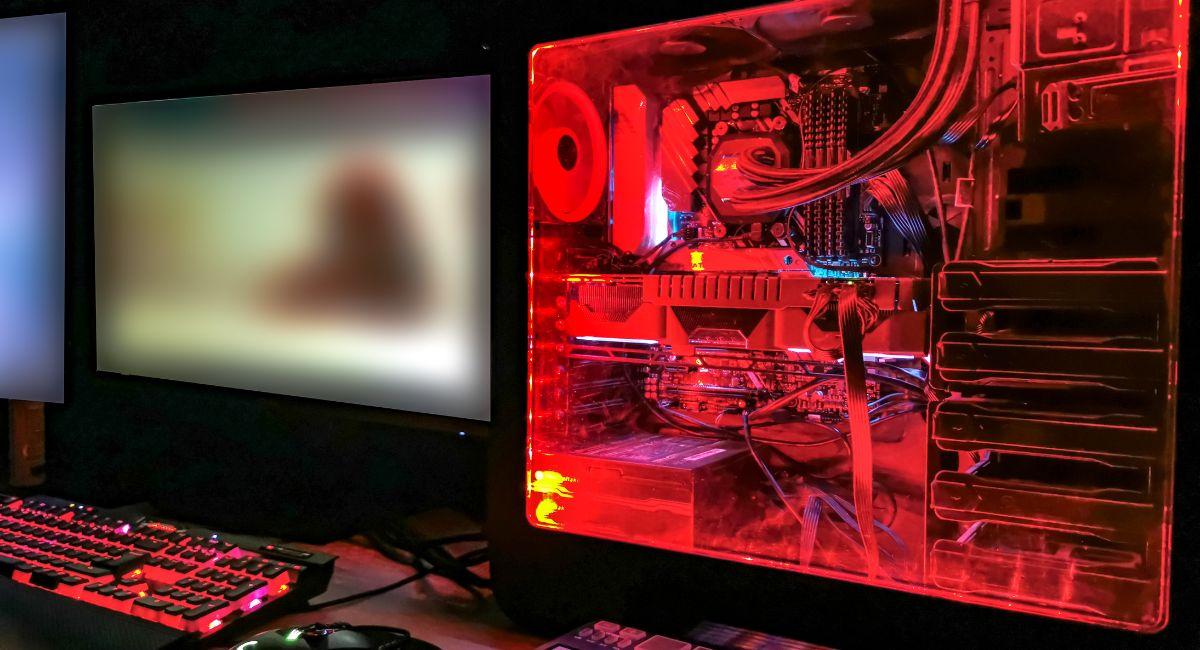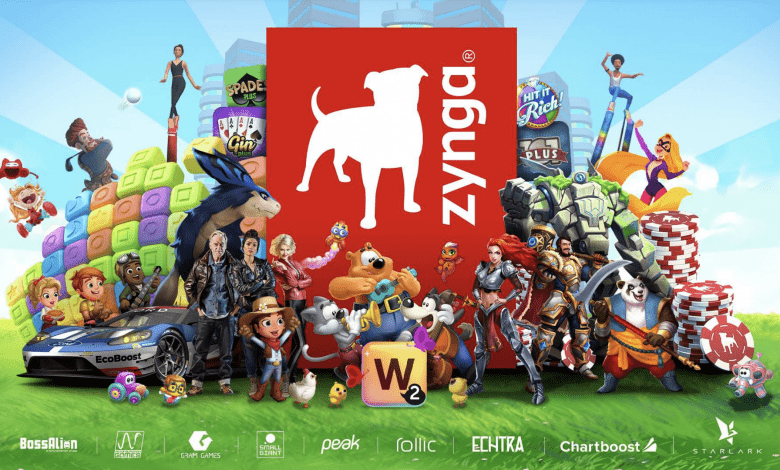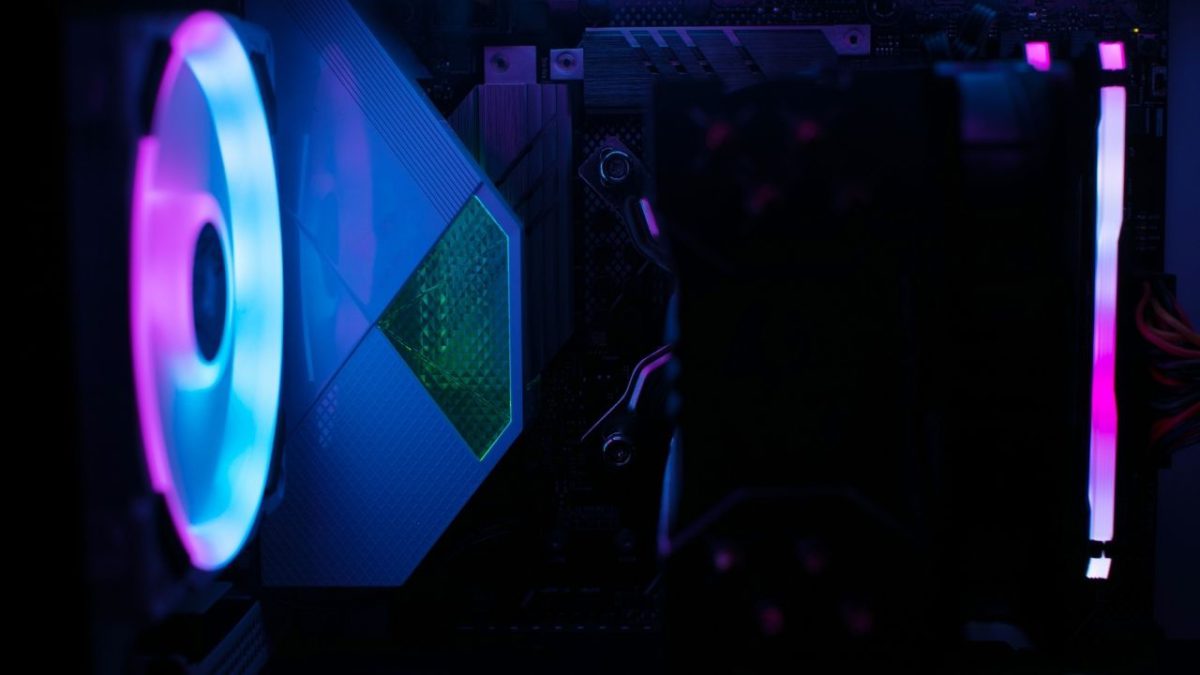The Future of Blockchain Gaming Graphics With Amazing Unreal Engine 5 And Beyond
The convergence of blockchain technology and gaming has ignited a revolution, promising a future where players own in-game assets, participate in decentralized economies, and experience unparalleled immersion. However, one crucial aspect continues to evolve: graphics. In this article, we delve into the transformative potential of Unreal Engine 5 (UE5) for blockchain gaming graphics and explore the exciting possibilities that lie beyond.
Breaking the Pixel Barrier: The Power of Unreal Engine 5
Unreal Engine 5, the latest iteration of Epic Games’ industry-leading engine, boasts a suite of groundbreaking features poised to redefine gaming visuals. Here’s how UE5 is poised to revolutionize blockchain gaming graphics:
- Lumen: A New Era of Lighting: UE5’s Lumen system delivers dynamic, real-time lighting that realistically reacts to changes in the environment, creating breathtakingly immersive visuals. Imagine sunlight filtering through virtual trees or the flickering of torches in a dungeon, all rendered in stunning detail.
- Nanite: Worlds in Microscopic Detail: Nanite allows for the import of massive, high-quality assets directly into the engine without sacrificing performance. This translates to vast, intricately detailed landscapes, intricate character models, and truly lifelike environments in blockchain games.
- World Partition: Seamless Open Worlds: World Partition enables the creation of massive, open worlds that are streamed seamlessly without loading screens. This opens the door for expansive blockchain-based games with limitless exploration possibilities.
These features, combined with UE5’s suite of animation, physics, and audio tools, have the potential to propel blockchain gaming graphics to a level previously unimaginable.
The Art of Integration: Challenges and Considerations
Unreal Engine 5 (UE5) has revolutionized game development with its groundbreaking features like Nanite virtualized geometry and Lumen global illumination. This powerhouse engine holds immense potential for blockchain gaming graphics, offering the ability to create stunning visuals that rival AAA titles. However, integrating UE5 with blockchain functionalities presents a unique set of challenges and considerations for developers.
Challenges of Integrating UE5 with Blockchain Gaming:
-
Scalability and Performance: While UE5 boasts impressive visuals, maintaining high frame rates and smooth performance becomes more critical in online multiplayer environments, especially for large-scale blockchain games. Balancing visual fidelity with performance optimization is essential for a positive player experience.
-
Transaction Speed and Latency: Blockchain networks can suffer from slow transaction speeds and latency, which can disrupt smooth gameplay mechanics within UE5 experiences. Developers need to find creative solutions to minimize the impact of blockchain transactions on in-game performance.
-
Data Storage and Management: UE5 assets can be quite large. Integrating with blockchain for features like NFT-based in-game items requires careful consideration of data storage and management solutions. Decentralized storage solutions like IPFS (InterPlanetary File System) can be explored to manage game assets efficiently.
-
Security and In-Game Fraud: Security is paramount when dealing with in-game assets represented as NFTs on a blockchain. Developers need to implement robust security measures within UE5 to prevent hacking, exploits, and manipulation of in-game economies.
Considerations for Seamless Integration:
-
Modular Design: Developing the game with a modular design can be beneficial. This allows for easier integration of blockchain functionalities without major disruptions to the core game engine functionalities within UE5.
-
Offline Functionality: Consideration should be given to allowing players to enjoy core gameplay elements even when disconnected from the blockchain network. This ensures a fallback option and caters to players in regions with limited internet connectivity.
-
Smart Contract Optimization: Optimizing smart contracts, the self-executing code on the blockchain that governs in-game economies and item ownership, is crucial. Streamlining smart contract functionality can minimize latency and improve overall game performance.
-
Community Building and Transparency: Building trust with the gaming community is vital. Developers need to be transparent about how blockchain integration works, potential risks involved, and how they plan to address security concerns.
Potential Solutions and Future Developments:
-
Layer 2 Scaling Solutions: The adoption of Layer 2 scaling solutions for blockchain networks can significantly improve transaction speed and reduce latency. This can alleviate the performance bottlenecks associated with traditional blockchain integration in blockchain gaming graphics.
-
Hybrid Solutions: Exploring hybrid approaches that combine the power of UE5 for graphics rendering with lightweight blockchain solutions specifically designed for gaming applications can be a viable strategy.
-
Cloud Gaming and Streaming: Cloud gaming platforms hold promise for mitigating some of the performance challenges associated with blockchain games. Streaming UE5 games through the cloud can alleviate processing power limitations for individual players.
Also, read – Top 10 Ways Crazy Bitcoin Rewards In Blockchain Gaming Can Lead To Wider Adoption
Beyond UE5: Exploring the Horizon of Blockchain Gaming Graphics Innovation
While Unreal Engine 5 (UE5) offers a glimpse into the future of game graphics, the ever-evolving realm of blockchain gaming demands exploration beyond established engines. Here, we delve into the exciting possibilities and emerging technologies that could redefine blockchain gaming graphics innovation in the blockchain gaming landscape:
Emerging Graphics Technologies:
-
Real-time Ray Tracing with Blockchain Integration: Leveraging real-time ray tracing within blockchain games can produce unparalleled lighting and shadow effects, creating hyper-realistic environments. However, integrating this computationally intensive process with blockchain functionalities requires innovative solutions to maintain performance. Off-chain rendering or cloud-based processing could be potential avenues.
-
Procedural Content Generation with Blockchain Influence: Procedural generation techniques can create vast and unique game worlds. Integrating blockchain can allow players to influence these worlds through in-game actions or NFT ownership. Imagine landscapes that dynamically change based on community choices or player-owned assets that alter the environment.
-
Decentralized Rendering and Cloud Gaming: Decentralized rendering networks hold promise for distributing the processing power required for high-fidelity graphics across a network of computers. This could alleviate performance limitations for individual players and enable even more visually stunning experiences in blockchain games. Cloud gaming platforms can further contribute by streaming these graphics-intensive games to players’ devices.
The Rise of Interoperable Blockchain gaming Graphics Assets:
-
Standardized Asset Formats and Blockchain Integration: Standardized asset formats for 3D models, textures, and animations could allow developers to create interoperable graphics assets. Imagine using a character design across different blockchain games, fostering a sense of player identity and item portability within the metaverse.
-
NFT-based Graphics Assets and Customization: NFTs could represent ownership of unique in-game graphics assets like character skins, weapons, or even entire environments. This allows for deeper player customization and opens doors for a thriving marketplace for user-generated content within blockchain games.
The Power of Community-Driven Innovation:
-
Decentralized Autonomous Organizations (DAOs) for blockchain gaming graphics Development: DAOs, community-driven organizations on the blockchain, could play a role in funding and directing graphics development efforts. Imagine a DAO where players collectively decide on the artistic direction of a game or even contribute their own 3D design skills to shape the visual style.
-
Open-Source Graphics Tools and Blockchain Collaboration: Open-source development of graphics tools specifically designed for blockchain games could foster innovation and rapid advancements. Collaboration between developers, artists, and the wider gaming community can accelerate the creation of new rendering techniques and tools optimized for the unique demands of blockchain gaming graphics.
Challenges and Considerations:
-
Balancing Visual Fidelity with Scalability: Achieving high-fidelity graphics while maintaining scalability for a large user base within blockchain games remains a challenge. Developers need to find the right balance between visual appeal and ensuring a smooth gameplay experience for all players.
-
Security and Data Integrity: As graphics assets become more valuable through NFT ownership, robust security measures are crucial. Protecting these assets from theft or manipulation within the blockchain ecosystem is paramount.
-
Evolving Regulatory Landscape: Regulations surrounding NFTs and in-game economies are still under development. Developers need to stay informed and adapt their graphics innovation strategies as the regulatory landscape evolves.
The future of blockchain gaming graphics innovation lies not just in leveraging cutting-edge engines like UE5, but in exploring the possibilities of emerging technologies, interoperable assets, and a collaborative community-driven approach. By embracing these advancements and addressing the associated challenges, developers can create visually stunning and immersive blockchain games that redefine the boundaries of what’s possible within the play-to-earn revolution. As the technology matures and the industry evolves, we can expect to see a convergence of these innovative graphics solutions, paving the way for a visually breathtaking and truly interconnected future for blockchain gaming.
A Symbiotic Relationship: Art and Technology Collide
The future of blockchain gaming graphics hinges on a symbiotic relationship between cutting-edge technology and artistic vision. Here’s what we can expect:
- Focus on Player Experience: While groundbreaking visuals are exciting, they should ultimately serve to enhance the gameplay experience and immerse players in the game world.
- The Rise of Artist-Developers: A new breed of developers who are both skilled programmers and passionate artists will be crucial for creating visually stunning and engaging blockchain games.
- Community-Driven Content Creation: Blockchain technology could empower players to contribute to the visual landscape of games through the creation and ownership of in-game assets.
The possibilities are truly endless. With continued innovation and a focus on player experience, blockchain gaming graphics have the potential to surpass even the wildest imaginations, blurring the lines between reality and the virtual world.
Conclusion: A Canvas Awaits
The future of blockchain gaming graphics is nothing short of a painter staring at a blank canvas – brimming with potential and ripe for creation. While established engines like Unreal Engine 5 offer a powerful foundation, the possibilities extend far beyond. The horizon shimmers with the promise of real-time ray tracing, weaving hyper-realistic lighting and shadows. Procedural content generation, infused with blockchain influence, can birth ever-evolving worlds that respond to player actions and ownership. Decentralized rendering and cloud gaming hold the key to unlocking breathtaking visuals by distributing the processing burden across vast networks.
This graphical revolution wouldn’t be complete without the power of interoperable assets. Imagine a standardized format that allows players to seamlessly move their meticulously crafted character skin or prized weapon across different blockchain games, fostering a sense of identity and item portability within a vast metaverse. NFTs take this a step further, transforming in-game graphics assets into valuable digital possessions. Players can own unique character designs, customize their virtual avatars with NFT-based accessories, or even shape entire environments through NFT ownership.
The artistry doesn’t stop with developers and studios. Decentralized Autonomous Organizations (DAOs) empower communities to collectively steer the artistic direction of blockchain gaming graphics. Imagine a world where players, through a DAO, decide on the visual style of a game or even contribute their artistic talents, shaping the visual landscape collaboratively. Open-source development of graphics tools specifically designed for blockchain games fosters rapid innovation. A vibrant community of developers, artists, and enthusiasts can collaborate on creating new rendering techniques and tools, pushing the boundaries of what’s graphically possible.
Of course, this artistic journey isn’t without its challenges. Striking the perfect balance between visual fidelity and scalability remains a hurdle. Developers need to ensure that these stunning visuals translate to a smooth and enjoyable gameplay experience for all players, regardless of their device limitations. Security is paramount, as these graphics assets become more valuable with NFT ownership. Robust measures need to be in place to protect them from theft or manipulation within the blockchain ecosystem. Finally, the evolving regulatory landscape surrounding NFTs and in-game economies necessitates constant adaptation and innovation.
However, the challenges are mere brushstrokes on a grand masterpiece. As technology matures and the industry embraces collaboration, we can expect a convergence of these innovative graphics solutions. This will pave the way for a future where blockchain games aren’t just visually stunning, but truly interconnected. Players will traverse breathtaking virtual worlds, wielding their personalized NFT-based creations, all within a thriving and collaborative artistic ecosystem. The canvas awaits – the future of blockchain gaming graphics is ours to paint. Let’s pick up our brushes and unleash our creativity, for the world of blockchain gaming awaits its most vibrant masterpiece yet.
Stay informed with daily updates from Blockchain Magazine on Google News. Click here to follow us and mark as favorite: [Blockchain Magazine on Google News].
Get Blockchain Insights In Inbox
Stay ahead of the curve with expert analysis and market updates.
latest from tech
Disclaimer: Any post shared by a third-party agency are sponsored and Blockchain Magazine has no views on any such posts. The views and opinions expressed in this post are those of the clients and do not necessarily reflect the official policy or position of Blockchain Magazine. The information provided in this post is for informational purposes only and should not be considered as financial, investment, or professional advice. Blockchain Magazine does not endorse or promote any specific products, services, or companies mentioned in this posts. Readers are encouraged to conduct their own research and consult with a qualified professional before making any financial decisions. The featured image used is just a creative depiction of the title and it does not intend to hurt sentiments of any person or institution. If it hurts anyone sentiments, please do not hesitate to reach out to Blockchain Magazine.

 Bitcoin
Bitcoin  Ethereum
Ethereum  XRP
XRP  Tether
Tether  Solana
Solana  USDC
USDC  Dogecoin
Dogecoin  Cardano
Cardano  Lido Staked Ether
Lido Staked Ether  TRON
TRON  Wrapped Bitcoin
Wrapped Bitcoin  Chainlink
Chainlink  Wrapped stETH
Wrapped stETH  Avalanche
Avalanche  Sui
Sui  Stellar
Stellar  Litecoin
Litecoin  Hedera
Hedera  LEO Token
LEO Token  Shiba Inu
Shiba Inu  Toncoin
Toncoin  Hyperliquid
Hyperliquid  USDS
USDS  Polkadot
Polkadot  WETH
WETH  MANTRA
MANTRA  Bitcoin Cash
Bitcoin Cash  Ethena USDe
Ethena USDe  Bitget Token
Bitget Token  Wrapped eETH
Wrapped eETH  Uniswap
Uniswap  Monero
Monero  NEAR Protocol
NEAR Protocol  WhiteBIT Coin
WhiteBIT Coin  Pepe
Pepe  Bittensor
Bittensor  Aave
Aave  Ondo
Ondo  Aptos
Aptos  Internet Computer
Internet Computer  Dai
Dai  Official Trump
Official Trump  Ethereum Classic
Ethereum Classic  Mantle
Mantle  Tokenize Xchange
Tokenize Xchange  Gate
Gate  OKB
OKB  sUSDS
sUSDS  Sonic (prev. FTM)
Sonic (prev. FTM) 



